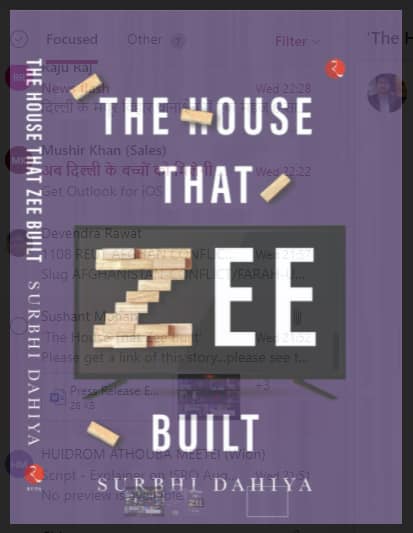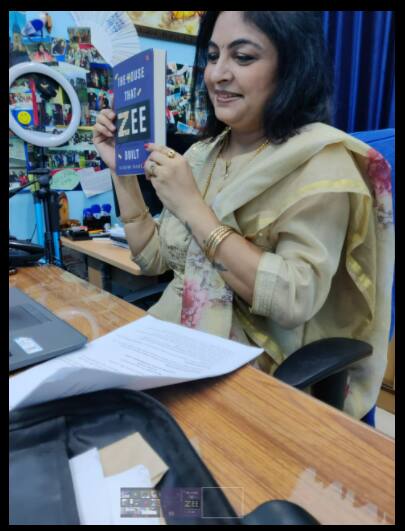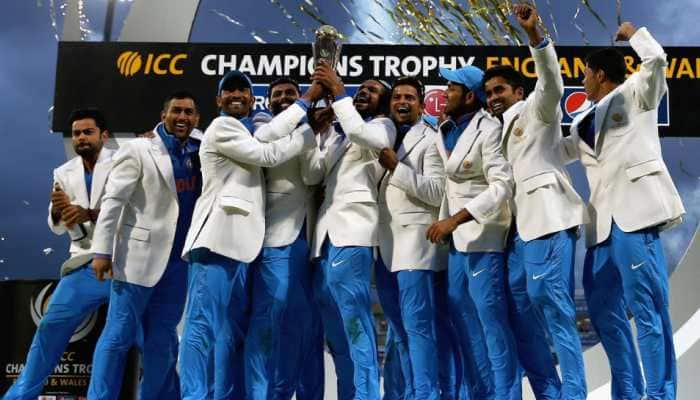‘The House That Zee Built’: Metamorphosis of family business into global conglomerate
The book packages a well-researched journey of the media mogul, Dr Subhash Chandra, and confers enlightening facts about the dynamic management models of the ZEE. It tells the story of India's pioneering media enterprise, as well as the people and strategies that went into its creation.
- The book eyes the journey, rise and management practices of Dr Subhash Chandra and his legacy
- The author has attempted to cover both the journalistic and the managerial aspects of Zee
- Devoid of tilted commentary, the book sheds equal light upon the institution’s upheavals and future challenges
Trending Photos
) Zee News Image
Zee News Image New Delhi: ‘The House That Zee Built’, an insightful book written by Prof (Dr) Surbhi Dahiya, was released by eminent media educators of the world in a Roundtable organized by World Journalism Education Council (WJEC), Indian Institute of Mass Communication (IIMC) and UNESCO jointly here on August 10, 2021.
The book packages a well-researched and deeply analyzed journey of the media mogul Dr Subhash Chandra and confers enlightening facts about the dynamic management models of the ZEE. It tells the story of India's pioneering media enterprise, as well as the people and strategies that went into its creation.
The saga starts in 1890 in an undivided Punjab and looks at the extremely humble beginnings of the Goenka family. From the family’s successful agri-business to an ambitious Subhash Chandra creating India’s first satellite television channel, this book is about the metamorphosis of a family business into a global conglomerate known as Zee.
The inherently risky business idea became such a national phenomenon that it spawned numerous similar television channels and even made global giants like Sony and News Corporation view India as a major television market.
The book eyes the journey, rise and management practices of a major media house in India. The author has attempted to cover both the journalistic and the managerial aspects of this media hub, and attempted to analyse the birth, primary products, product development and diversification alongwith the organisational structure, hierarchical charts, changing ownership of the papers and respective groups, editorial policies, HR policies, technological upgradation, market expansion, geographical spread and regional penetration, competitive strategy, edge over rivals and many more aspects.

With this and more, the book in its concluding chapters, outlines the company’s leadership structure, business overview, brand strategies, and business model, while simultaneously offering an analysis into how these propositions can be duly aligned and re-aligned.
Devoid of tilted commentary, the book sheds equal light upon the institution’s upheavals and future challenges. The narrative culminates with transformative scopes as well as the company’s outlook going forward. Simply put, this holistic compendium offers multiple perspectives on how this media organization has grown from strength to strength towards the goals that had been envisioned for them. The real anecdotes, exclusive inputs by the core team of Zee and the detailed analysis of the media world make this an essential read.
Prof Dahiya, who is the Course Director of English Journalism said that, “It is as much a telling of the legacy of India’s pioneering media enterprise as it is about the people and the strategies behind it. Offering an incisive look into the creation and sustenance of a brand that transcends boundaries, this is also a chronicle aimed at capturing the very essence of the phenomenon called Zee and the entrepreneurial foresight of Subhash Chandra and his sons Punit and Amit Goenka. It offers crisp and memorable insights into the inner workings of the media giant.” The work was immensely commended by some of the most significant faces in the field of media education across 10 countries.

“Dr. Dahiya takes the readers on a journey into the examination of the first three decades of Zee Media using a very objective and structural report,” said Prof Alan B Albarran, Professor Emeritus, University of North Texas, USA. Prof Albarran also contributed to the book with an elegantly- written foreword. Prof Graham Murdock, Professor Emeritus, Loughborough University, UK, also praised the book, saying, “it is an immensely well-researched, deeply detailed book that can be a perfect source of information about the happenings in the Indian media industry.”
The book launch was also joined by other distinguished speakers and leading media educators from organizations and institutions from 10 countries. The panel included Prof B. K Kuthiala, Council of Higher Education, Govt of Haryana & Chandigarh; Dr Anurag Batra, founder, Exchange4Media and Business World; Prof (Dr) Daya Thussu, International Communication, Department of Journalism, School of Communication, Hongkong Baptist University, Hong Kong; Prof. Sanjay Dwivedi, DG, IIMC; Dr Deb Aikat, Vice President of AEJMC and Associate professor, University of North California, USA.; Prof Ramon Guillermo R. Tuazon, Information consultant UNESCO Myanmar and Secretary General, AMIC, Phillipines; Dr Rasha El Ibiary Associate Professor, Future university Egypt, Prof (Dr) Devesh Kishore, former professor in IGNOU and IIMC, Dr Sadia Jamil, Post-Doctoral fellow, Khalifa University, UAE; Richard Pamatatau, AUT, Auckland, New Zealand; Kapish G Mehra, Managing Director, Rupa Publications.
The session was moderated by Vishnupriya Pandey.
Stay informed on all the latest news, real-time breaking news updates, and follow all the important headlines in india news and world News on Zee News.
Live Tv







)
)
)
)
)
)
)
)
)
)
